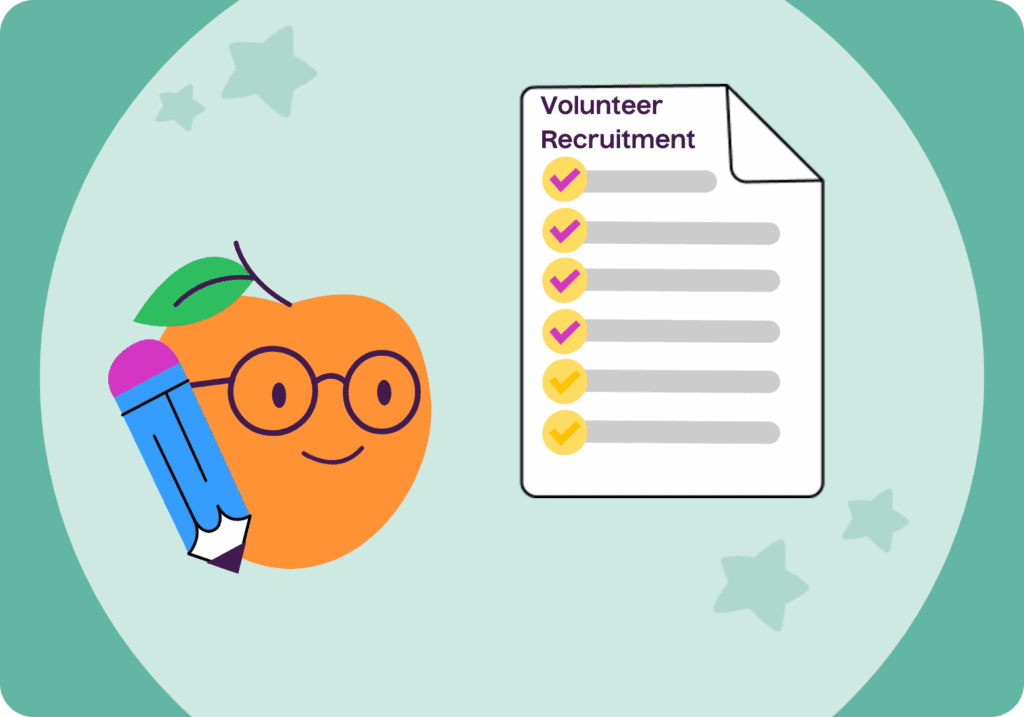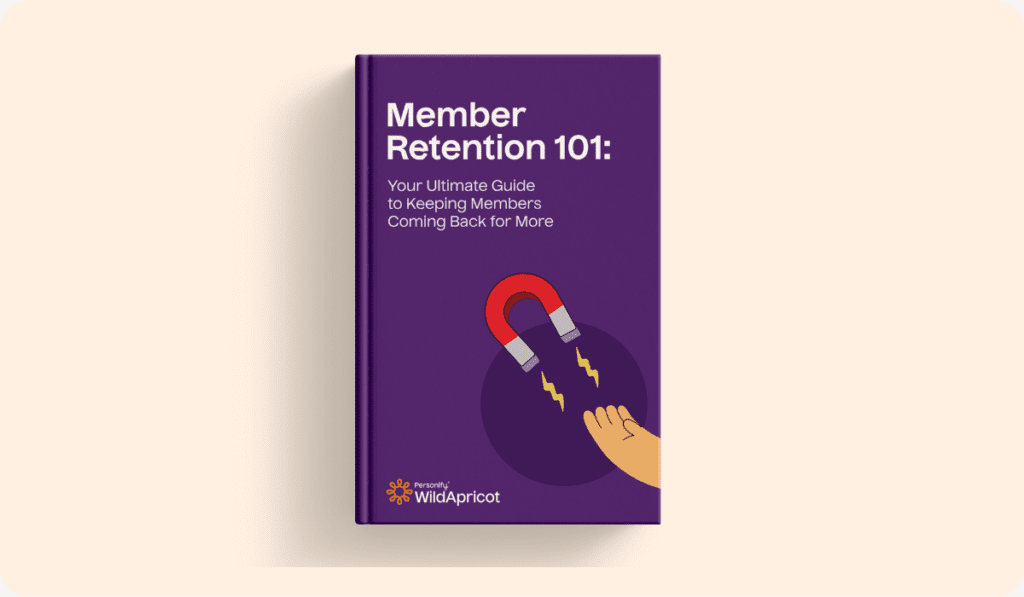So, you need more volunteers—what’s the best way to recruit them? Tried and true, the classic email.
But, it must be done well to gain the attention of potential volunteers.
We’ve got the answers you seek to packing a punch and crafting the perfect volunteer recruitment email. From identifying the features of a good recruitment email and writing one effectively to utilizing software that will allow you to automate and simplify the process – let’s go!
Before We Start
No matter how well executed your volunteer recruitment efforts are, you’ll need to keep a couple things in mind.
Before you write your first email, think about who you have in your existing contacts. You never know which of your members, donors or people in your network might be interested in volunteering.
As simple as it is to send an email, not everyone is going to respond to (or even open!) your call for help. Even people who have the time and willingness to volunteer may not write back if they don’t think they’re qualified or their help is truly needed.
Luckily, there are a few things you can do to increase your chances of recruiting volunteers through email. Now we can get on to the good stuff!
Read More: How to Recruit Volunteers from Start to Finish
What Makes a Good Volunteer Recruitment Email?
1. Personalize It
Statistica reports that 65% of marketers are sending emails with subject lines that are personalized to the recipient. On top of that, Campaign Monitor finds that these emails are 26% more likely to be opened and email revenue increases 760% from utilizing segmentation for email campaigns.
You might be thinking – “I’m not looking to sell anything, just gain more volunteers.” This same data can apply to your volunteer recruitment messaging and improve your email performance!
Simply add your recipient’s name in the subject line and the body of your email. It seems basic, but so powerful. Now your email has a much higher chance of standing out.
When you send the same standardized email to everyone, your recipient will feel like a nameless, faceless number on your email list. How do you respond to “Dear sir/madam” or “hey member/friend”? You probably don’t even read the rest of the message.
But, when you include their name, it will instantly stand out to them. As Dale Carnegie, a well-known expert on the art of persuasion best put it, “A person’s name is to that person, the sweetest, most important sound in any language.”
2. Segment Your Message
Don’t just send the same message to everyone on your contact list.
Particularly engaged members and people who open your emails often may be happy with a more casual email listing your various volunteer opportunities. On the other hand, your donors may need an email that expresses gratitude for their financial support and explains how volunteering will further help your organization. Past volunteers might want to hear how much you appreciated their help in the past and how you’d love to have them get on board once again.
You can even take it one step further and craft a version of your email that current volunteers can send to their friends and people in their network, sharing their own experience and inspiring others to join them.
It might seem like a lot of work to create multiple emails to send out, but you’ll see a difference! Segmenting your message will always be more effective and will make your volunteer recruitment process that much easier.
3. Be Specific
A vague call for volunteers is unlikely to get any responses. Before people can commit to volunteering, they need to know exactly what’s involved, how much of their time it will take up and what skills are required.
In your volunteer recruitment email, be clear about what positions you’re looking to fill, as well as their requirements. If this information is too much to put into one email, you can include a link to a page on your website with more details.
For example, if you’re looking for someone to design your event materials, you might say “Looking for volunteers to help with upcoming event!” Will this get any responses from qualified volunteers? Probably not.
Instead, try “Love graphic design? Come help design our fundraiser banner!” A skilled graphic designer will be much more likely to step forward. Bonus – yo tend to get more passionate volunteers who will have a rewarding experience giving their time to your organization.
4. Be Friendly
This should go without saying, but people will be more likely to respond to an email that’s friendly and inviting.
Remember that you’re asking people to volunteer their time, so make sure you’re asking this in a nice, warm and appreciative tone. Explain how much their help will benefit your organization and make them feel good about the idea of helping out.
Be sure to also thank them in advance — you can never have too much gratitude!
Read more: How to Write a Volunteer Thank-You Letter That’s Actually Meaningful (+ Template)
5. Share Past Volunteer Experiences
Sharing the success stories of other volunteers can also reinforce your message. Prospective volunteers want to hear about the positive experiences others have had. Highlight your most enthusiastic volunteers by putting together quotes, testimonials and show the real impact they’re made from their time commitment.
This is also a great opportunity to share the motivations for volunteering. In your volunteer testimonials, ask why they give their time. This will help you make an even more effective recruitment message.
Tip: if you want to shorten your email length you can also share these personal stories in a video! Simply link or embed the clip in your email.
6. Provide Contact Information
More often than not, potential volunteers will have questions before they commit their time. They may need clarification about the requirements, work setting, potential scheduling conflicts or flexibility.
To make the process as simple as possible for them, provide the name and contact information of someone they can reach out to. This can be as easy as hitting reply on your email, or sending a separate email to a dedicated person. If you’re sending your email to 250 people, it may be a good idea to assign a few different contact people, so that one person isn’t bombarded with more questions than they can handle.
Some of your prospective volunteers may be more comfortable reaching out via phone, too, so be sure to make that option available.
Read more: How To Create A Volunteer Engagement Strategy that Actually Works
7. Review It
Once you’ve drafted your email, take some time to review it yourself and ask a few colleagues to look it over, as well. This will take care of any mistakes, typos, or improvements to the flow and tone of your email.
It’s also a good idea to ask a few of your current volunteers to review your email. They’ll be able to tell you whether it makes sense and whether you’ve accurately described the positions and their requirements.
Volunteer Recruitment Email Template
Now that you have all of the elements of an effective recruitment message, its time to write your own! We’ve put together a helpful template to get you started. Simply open the Google doc here and make a copy so you can edit the message to match your nonprofit organization!

Read more: How to Create a Winning Volunteer Newsletter: Ideas, Examples and Templates to Inspire
How to Send Personalized Emails to Your Volunteers
By now it’s hopefully clear that effective emails are highly personalized, whether it comes to the recipient’s name or the kind of message they should receive.
But one question still remains.
If you’re sending out 250 emails, how can you personalize each one without wasting a huge amount of time?
Simple. There is software that can personalize your emails at scale.
WildApricot’s all-in-one membership management software has an emailing system that can easily do this. By utilizing email macros, you can seamlessly populate each potential volunteer’s information, making the recruitment letter specific to them and the event you’re asking them to volunteer for.
Here’s some macro examples you might use for volunteer recruitment emails:
- First name
- Last name
- Membership level
- Event name
- Event date
- Event location
- Event URL
- Contact email for your organization
Read More: New Volunteer Checklist: How to Onboard and Welcome New Volunteers
Try It For Yourself!
If you’re looking to quickly and easily send personalized volunteer recruitment emails, be sure to give WildApricot a try. Plus, as an all-in-one membership management software, we have tons of other features that will make managing your nonprofit organization easier.
With WildApricot you can:
- Automate email communications
- Build a high-quality fundraising page on your website
- Plan and promote any volunteering event
- Easily manage all your members and volunteers
- Build an online store to raise more for your org
Start your 60-day free trial here!

If you’d like more details on the WildApricot emailing system, all the possible ways in which you can use it and answers to common troubleshooting issues, be sure to visit the WildApricot Get Help site.
Best of luck with your volunteer recruitment!









